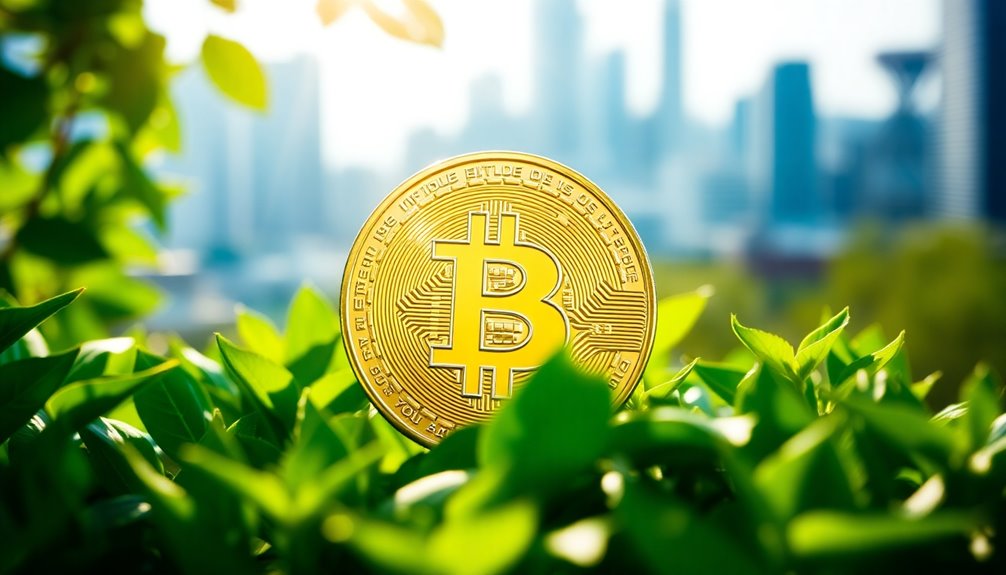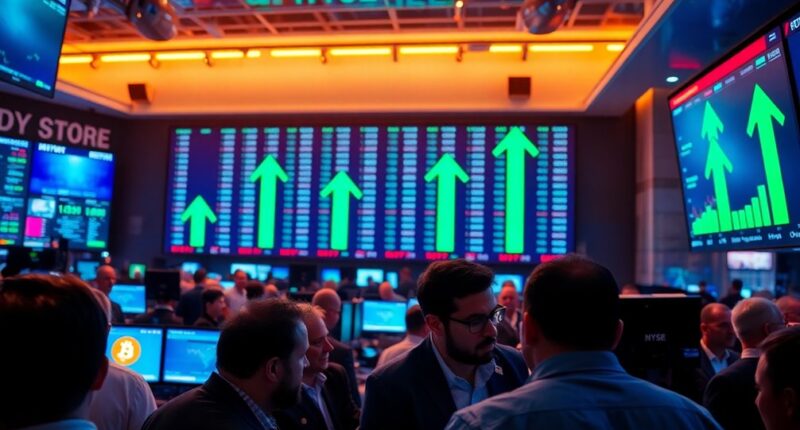The recent push by the US government to establish a Crypto Reserve has caught your attention, hasn't it? With Bitcoin surging over 10%, it signals a noteworthy shift in the political landscape towards cryptocurrency. This initiative could pave the way for increased institutional adoption and change how you view digital assets. But what does this really mean for the future of cryptocurrencies and your investments? Let's explore the implications further.

As the US government pushes to establish a Crypto Reserve, Bitcoin's value surged, reflecting a newfound confidence in digital currencies. This initiative marks a significant step toward integrating major cryptocurrencies into the national financial system, akin to traditional gold reserves.
With Bitcoin, Ethereum, XRP, Solana, and Cardano slated for inclusion, the reserve aims to bolster the legitimacy of cryptocurrencies and foster greater institutional adoption. The announcement alone triggered a notable rally in the global crypto market, highlighting the potential impact of this shift. Free Crypto Opportunities can also be explored as investors seek to maximize their gains during this market surge.
The inclusion of Bitcoin, Ethereum, XRP, Solana, and Cardano in the reserve could significantly enhance cryptocurrency legitimacy and institutional adoption.
Investors reacted positively, with Bitcoin's price climbing over 10% shortly after the news broke. Ethereum followed suit, experiencing a nearly 13% rise. Altcoins like XRP, Solana, and Cardano saw even more significant gains, with increases of 30%, 20%, and over 50%, respectively.
As a result, the total global crypto market cap surged by more than $300 billion, showcasing a robust resurgence in investor confidence. You can see how quickly the market can react to regulatory changes, emphasizing the importance of government involvement in shaping the future of digital assets.
Interestingly, this shift in policy aligns with former President Trump's newfound support for cryptocurrencies. Initially skeptical, Trump now aims to position the US as the "Crypto Capital of the World."
He signed an executive order to strengthen US leadership in digital financial technology while signaling a more favorable regulatory environment by withdrawing investigations into major crypto firms. This contrasts sharply with the Biden administration's more regulatory-heavy stance, which could lead to a more competitive landscape for cryptocurrencies.
The implications of the US Crypto Reserve could be profound. It's likely to drive broader institutional adoption of cryptocurrencies, encouraging other countries to follow suit, which would accelerate mainstream acceptance. Additionally, the reserve could redefine global crypto regulation and US financial policy, potentially reshaping how digital currencies are governed.
Additionally, clearer regulatory frameworks may emerge, providing the stability that both investors and institutions seek. Cryptocurrencies could act as a hedge against inflation, enhancing economic stability while potentially redefining global finance through technological advancements.
However, operational details remain uncertain. It's unclear how the reserve will be funded—whether through government purchases or seized assets—and the management structure hasn't been clearly defined.
As you consider these developments, it's essential to acknowledge the potential risks and volatility associated with crypto reserves. The path ahead is filled with opportunities and challenges, but one thing is for sure: the landscape of digital currencies is rapidly evolving.









